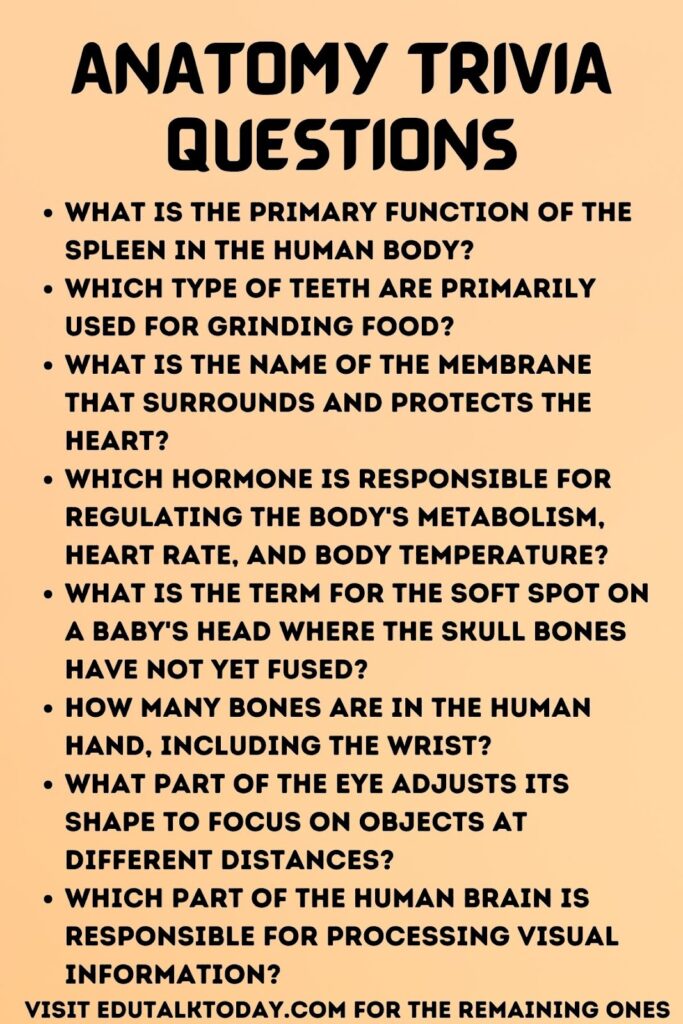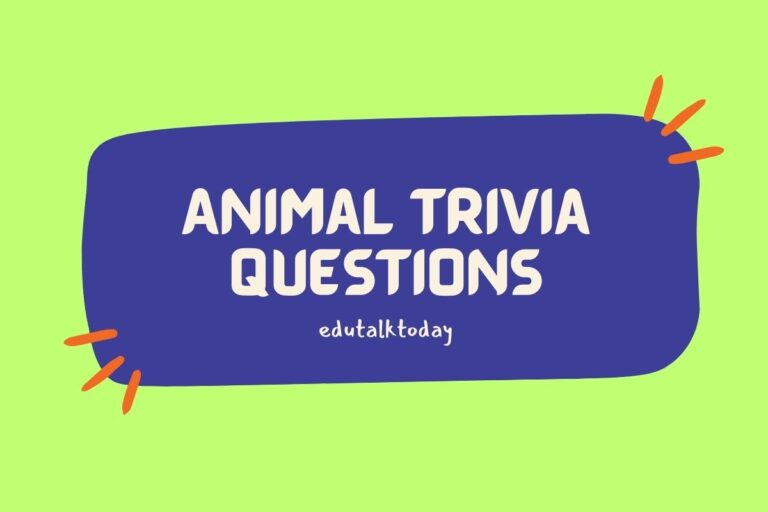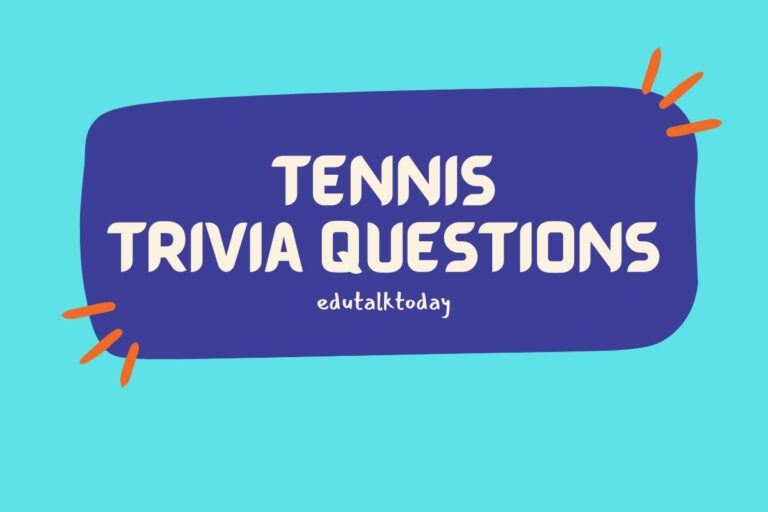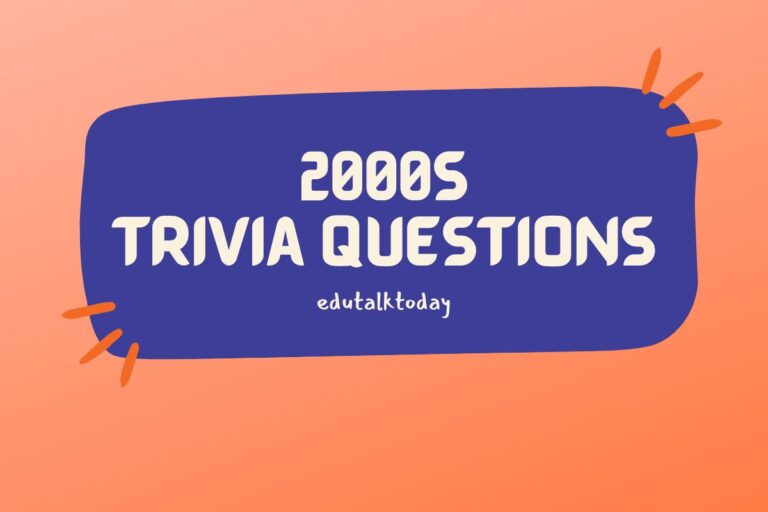68 Anatomy Trivia Questions

Anatomy is the study of the structure and organization of the human body.
Whether you’re a medical professional, a biology enthusiast, or just curious about the inner workings of your own body, testing your knowledge with some trivia can be a fun and educational way to learn more about this fascinating subject.
In this blog post, we’ve compiled a list of anatomy trivia questions to challenge your understanding of the human body.
So, grab a pen and paper or gather some friends to see who can answer these questions correctly!
Anatomy Trivia Questions
- What is the largest organ in the human body?
- Which bone is the longest and strongest in the human body?
- How many chambers does a human heart have?
- What is the smallest bone in the human body, and where is it located?
- Which part of the brain is responsible for regulating heart rate and breathing?
- What is the main function of red blood cells?
- What type of joint is the human shoulder considered to be?
- What is the name of the process by which cells generate energy in the absence of oxygen?
- In which part of the eye are rods and cones located?
- What is the largest muscle in the human body?
- What is the name of the protein that allows muscles to contract?
- How many pairs of ribs does the average human have?
- What is the common term for the tympanic membrane?
- What type of cells are primarily responsible for the immune response in the body?
- Which gland in the human body regulates metabolism?
- What is the pH level of normal human blood?
- What structure connects muscles to bones?
- Which hormone is primarily responsible for regulating blood sugar levels?
- What is the name of the largest artery in the human body?
- How many types of permanent teeth does an average adult human have?
- What part of the human body is the cranium located in, and what is its primary function?
- Which organ is responsible for detoxifying chemicals and metabolizing drugs in the body?
- What is the term for the group of membranes that protect the brain and spinal cord?
- What type of joint is formed where the femur meets the pelvis?
- What is the name of the smallest muscle in the human body, and where is it located?
- Which part of the brain is responsible for muscle coordination and balance?
- What are the primary cells involved in the production of bone?
- What is the name of the fluid that cushions and lubricates joints?
- What is the term for the natural pacemaker of the heart?
- How many lobes does the right lung have in humans?
- What is the largest internal organ in the human body?
- What is the name of the process by which the body cools itself through sweat evaporation?
- In which part of the human body is the ulna bone located?
- What is the term for the colored part of the human eye that controls the size of the pupil?
- What is the name of the largest vein in the human body?
- Which part of the human brain is involved in the formation of new memories?
- What is the term for the process by which oxygen and carbon dioxide are exchanged in the lungs?
- What is the common name for the phalanges?
- Which hormone is responsible for the fight-or-flight response in humans?
- How many cervical vertebrae are present in the human neck?
- What type of muscle is found in the heart?
- What is the primary function of the lymphatic system in the human body?
- In which part of the human body would you find the Achilles tendon?
- What is the term for the transparent front part of the eye that covers the iris and pupil?
- Which gland in the human body is considered the ‘master gland’?
- What is the name of the bone that forms the forehead?
- What term describes the removal of waste products from the blood through the kidneys?
- How many taste buds does the average human tongue have?
- What is the name of the connective tissue that attaches muscle to bone?
- What is the term for the group of four muscles and their tendons that provide strength and stability to the shoulder joint?
- Which part of the human body contains the humerus bone?
- What is the largest part of the human brain?
- Which organ in the human body is responsible for producing insulin?
- What is the name of the bone that is located at the base of the skull?
- How many pairs of salivary glands are typically present in the human mouth?
- What is the term for the involuntary contraction of a muscle?
- In which part of the body is the femoral artery located?
- What is the primary function of the spleen in the human body?
- Which type of teeth are primarily used for grinding food?
- What is the name of the membrane that surrounds and protects the heart?
- Which hormone is responsible for regulating the body’s metabolism, heart rate, and body temperature?
- What is the term for the soft spot on a baby’s head where the skull bones have not yet fused?
- How many bones are in the human hand, including the wrist?
- What part of the eye adjusts its shape to focus on objects at different distances?
- Which part of the human brain is responsible for processing visual information?
- What is the term for the space in the chest between the lungs?
- In what part of the body would you find the patella?
- What is the primary function of platelets in the blood?
Answers
- The largest organ in the human body is the skin.
- The longest and strongest bone in the human body is the femur (thigh bone).
- The human heart has four chambers: two atria and two ventricles.
- The smallest bone is the stapes, located in the middle ear.
- The medulla oblongata, a part of the brainstem, regulates heart rate and breathing.
- The main function of red blood cells is to transport oxygen throughout the body.
- The human shoulder is considered a ball-and-socket joint.
- The process is called anaerobic respiration.
- Rods and cones are located in the retina of the eye.
- The largest muscle in the human body is the gluteus maximus.
- The protein that allows muscles to contract is actin and myosin.
- The average human has 12 pairs of ribs.
- The common term for the tympanic membrane is the eardrum.
- White blood cells (leukocytes) are primarily responsible for the immune response.
- The thyroid gland regulates metabolism.
- The pH level of normal human blood is approximately 7.4.
- Tendons are the structures that connect muscles to bones.
- Insulin is the hormone primarily responsible for regulating blood sugar levels.
- The largest artery in the human body is the aorta.
- An average adult human has four types of permanent teeth: incisors, canines, premolars, and molars.
- The cranium is located in the head and its primary function is to protect the brain.
- The liver is responsible for detoxifying chemicals and metabolizing drugs.
- The group of membranes that protect the brain and spinal cord are called the meninges.
- The joint formed where the femur meets the pelvis is a ball-and-socket joint.
- The smallest muscle in the human body is the stapedius, located in the middle ear.
- The cerebellum is responsible for muscle coordination and balance.
- Osteoblasts are the primary cells involved in the production of bone.
- Synovial fluid cushions and lubricates joints.
- The sinoatrial (SA) node is known as the natural pacemaker of the heart.
- The right lung has three lobes in humans.
- The liver is the largest internal organ in the human body.
- The process by which the body cools itself through sweat evaporation is called perspiration.
- The ulna bone is located in the forearm.
- The iris is the colored part of the human eye that controls the size of the pupil.
- The largest vein in the human body is the inferior vena cava.
- The hippocampus is involved in the formation of new memories.
- The process is known as gas exchange.
- The common name for the phalanges is the fingers and toes.
- Adrenaline (epinephrine) is responsible for the fight-or-flight response.
- There are seven cervical vertebrae in the human neck.
- The type of muscle found in the heart is cardiac muscle.
- The primary function of the lymphatic system is to transport lymph, a fluid containing infection-fighting white blood cells, throughout the body.
- The Achilles tendon is located in the back of the lower leg.
- The cornea is the transparent front part of the eye.
- The pituitary gland is considered the ‘master gland’ of the human body.
- The frontal bone forms the forehead.
- The removal of waste products from the blood through the kidneys is called filtration or renal filtration.
- The average human tongue has approximately 2,000-8,000 taste buds.
- Tendons are the connective tissue that attaches muscle to bone.
- The group of muscles is known as the rotator cuff.
- The humerus bone is located in the upper arm.
- The largest part of the human brain is the cerebrum.
- The pancreas is responsible for producing insulin.
- The bone located at the base of the skull is the occipital bone.
- There are typically three pairs of salivary glands in the human mouth.
- The term for the involuntary contraction of a muscle is a spasm.
- The femoral artery is located in the thigh.
- The primary function of the spleen is to filter blood and help fight infections.
- Molars are primarily used for grinding food.
- The membrane that surrounds and protects the heart is the pericardium.
- Thyroid hormone regulates the body’s metabolism, heart rate, and body temperature.
- The soft spot on a baby’s head is known as the fontanelle.
- There are 27 bones in the human hand, including the wrist.
- The lens of the eye adjusts its shape to focus on objects at different distances.
- The occipital lobe of the human brain is responsible for processing visual information.
- The space in the chest between the lungs is called the mediastinum.
- The patella, or kneecap, is found in the front of the knee.
- The primary function of platelets in the blood is to aid in clotting and prevent bleeding.






